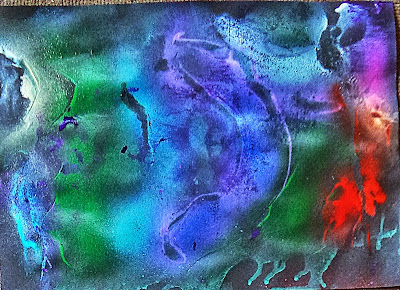Sunday, 22 March 2015
Technique and the application of a substance such as paint
Technique and the application of 'paint'.
The unique technique/s (or method/s) of the painter consists of the numerous special skills s/he has developed.
One aspect of technique (or range of techniques) of a painter is the way in which he produces colours on the
support. This could be the application of (different types of) paint, light, tiles, wax, oil, plaster, etc by
means of brushes, knives, pencils, reeds, computers, printers, etc to spray, drip, throw, sewn, etc to produce
colours or shades of grey (situated anywhere on the continuum from white to black). In other words, the aim of
employing these and other tools is to transfer colours (or the lack of colour) to the support.
In many cases a work will be defined by the manner in which 'paint' (etc) is transferred and applied to the
support. In some cases the manner in which and the tools by means of which 'paint' (etc) is transferred and
applied to the support make no difference - the only thing that matters is: the production of colours (or the
lack of them) on the support.
In many cases the main function of colours is to create a certain form (or the absence of clearly distinguishable
forms). Another function of colour is the fact that different colours (their tones, degree of saturation and
combinations of colours and their tones) have different strengths\s and functions. Colours express or represent
certain psychological 'moods', feelings and emotions, they stimulate the human (and animal) brains in different
ways and they convey different messages. These effects of colour is most likely further differentiated by factors
such as culture, subculture, socio-economic class, age, historical period, the context in which they are used, etc.
This context refers among other things to the institution (for example a disco, dance, school, uniuversity, church,
mosque, funeral, wedding, etc) in which the colours are used. Combinations of different colours, their degree of
saturation and tones will also produce a certain message and modify the strength and other aspects of a message.
The way in which paint or another substance is transferred to the support may in some cases be of primary importance
while in other cases it might be irrelevant. In some cases producing a certain colour (tone, degree of saturation,
etc) may be the aim of the artist and the way in which it is produced might be secondary or irrelevant.
22 March 2015 Ulrich
Subscribe to:
Post Comments (Atom)






No comments:
Post a Comment
Note: only a member of this blog may post a comment.